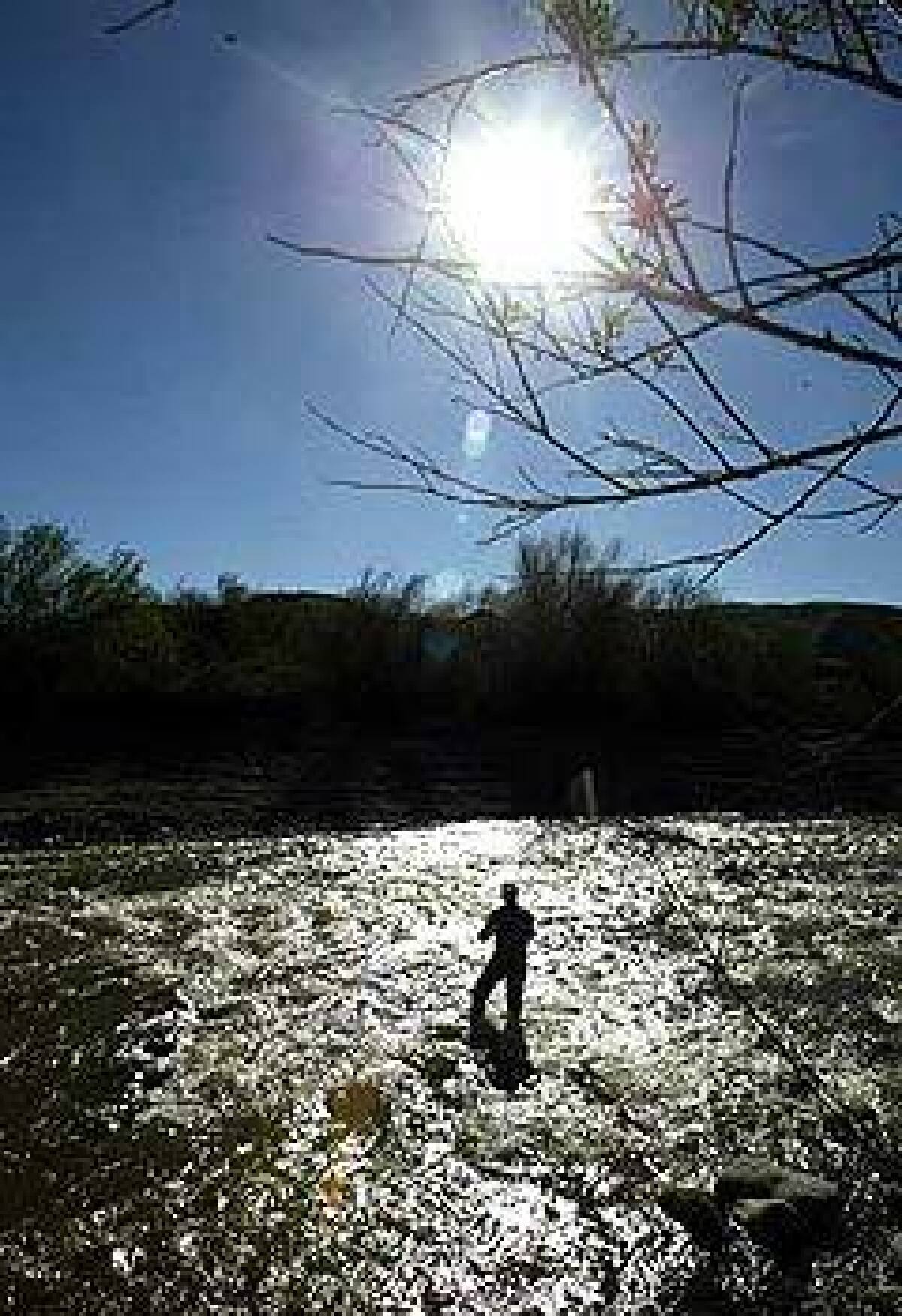A creek croaks

- Share via
Not even torrential rain may save one of the best and most accessible trout streams in Southern California from drying up this year under a new water management plan that could be approved this month The plan would protect an amphibian and return a creek to its natural state.
For decades, fly-fishers have worked the shady reaches of Piru Creek, a 50-mile waterway between Pyramid Lake and Lake Piru north of Castaic. Continuous releases of cool water upstream during summer keep riverbanks lush and fishing holes deep and ensure a steady supply of stocked trout. As long as the tap continues to run, the stream stays cool — warm water kills trout — and doesn’t dry up as it would naturally.
But the California Department of Water Resources is poised to reduce the summertime stream flow from Pyramid Lake by as much as 80% — a level scientists and anglers acknowledge will dry up parts of Piru Creek and kill many trout. Agency officials say current flows benefit bullfrogs, which eat the endangered southwestern arroyo toad. The plan could go into effect March 15.
“This is the only place in Southern California where you can drive up and start trout fishing within minutes, as opposed to hiking for hours,” said Jim Edmondson of CalTrout, an advocacy group. “A majority of terrestrial wildlife in the western United States depends on healthy trout streams. When you destroy a trout stream, you’re destroying an ecosystem.”
Anglers are especially riled because they say agencies charged with managing the creek offer conflicting explanations for the change.
Eva Begley, senior environmental scientist with the water resources department, says federal authorities are pushing for the new plan. She says the U.S. Fish and Wildlife Service requires protection of the toad under the Endangered Species Act. In addition, Begley says reduced stream flows would revert Piru Creek to its native condition.
“We’re just reproducing what would occur naturally,” she says.
But Fish and Wildlife Service officials say their agency did not direct the state to reduce water in Piru Creek. Rather, agency spokeswoman Lois Grunwald says after many toads washed out of the creek during a big release from Pyramid Lake two years ago “we recommended reducing the flows to maintain both the trout fishery and the natural habitat for the toad.”
Fishermen say they don’t think trout and toads are incompatible, though they are having a tough time persuading the state water department of that. Time is running out on the anglers; the public comment period ends Monday. “The arroyo toad has lived through every conceivable situation that man and God could contrive,” says Joe Richey, a fly-fisher who owns a ranch on Piru Creek. “They’re not going away, but the fish will if they make this change. I hate to see a beautiful fishery destroyed under what I think are false pretenses.”
Edmondson believes California budget woes lie at the heart of the dispute. He says the Department of Water Resources can make more money using water to generate electricity than supporting fish in Piru Creek.
A 1996 memo from the United Water Conservation District, which manages Lake Piru, estimates the state spends $1 million annually to sustain the Piru Creek fishery. State water officials, however, say money does not motivate their actions.
The state wildlife agency and some biologists say reduced flows will restore natural habitat in Piru Creek.
“That creek would never naturally have standing water year-round like it does now,” says UC Santa Barbara professor Samuel Sweet, who has studied and advised government agencies about Piru Creek. “There are overwhelming numbers of nonnative fish in the waters, and grasses and insects on the banks. It’s an ecosystem that we’ve completely changed.”
Dwayne Maxwell, senior biologist at the state Department of Fish and Game, says the dispute puts his agency in a difficult place. On the one hand, the department is an advocate for anglers, yet it must also protect wildlife.
. “Our department has an obligation to that toad as much as to our recreational fishers,” Maxwell says. “In this case, federal law may trump fishermen.”
More to Read
Sign up for Essential California
The most important California stories and recommendations in your inbox every morning.
You may occasionally receive promotional content from the Los Angeles Times.










